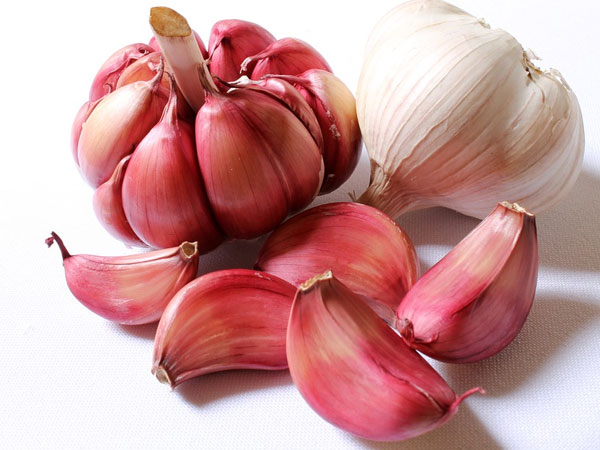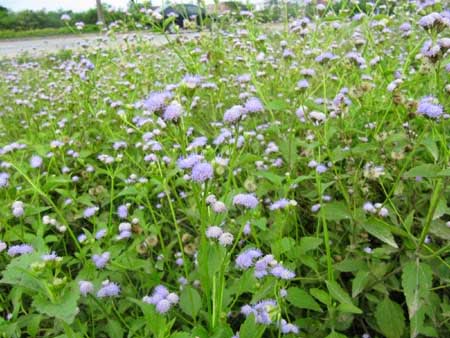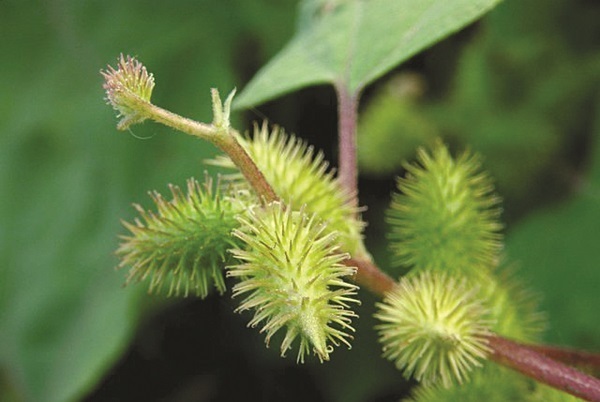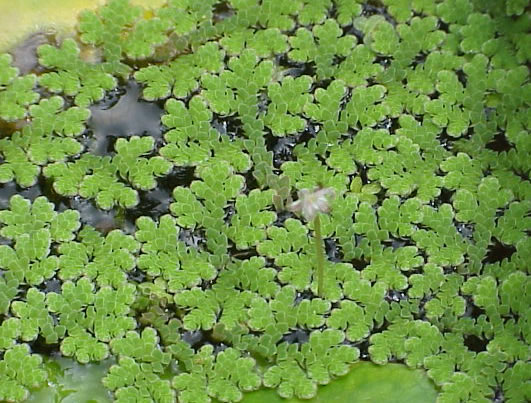What is Allergic Rhinitis?
Allergic rhinitis is defined as a condition of mucosal damage, inflammation, and swelling caused by various internal and external agents. Allergy means allergy (from the Greek: allos means different) and erg (ergon) means different.
Allergic rhinitis can be understood as a strange reaction of the body to certain factors (called antigens) leading to hypersensitivity reactions to the human body. Allergic rhinitis occurs in many different age groups, of which about 8% of adults suffer from this disease. The age of prevalence is also quite wide, ranging from 21-45 years old. The disease can also occur in the elderly and children, but at a lower rate.
Types of allergic rhinitis
There are two common types of allergic rhinitis: seasonal allergic rhinitis and perennial allergic rhinitis. Each type has its own progression time
Seasonal allergic rhinitis
People with seasonal illness often have symptoms of hypersensitivity when exposed to seasonal allergens. The most common is the monsoon, which brings cold air; some pollens are allergenic; plants that grow in certain seasons, etc. In general, seasonal allergies usually only appear in patients at certain times of the year due to a number of seasonal triggers. The signs of allergic rhinitis will disappear when the allergen ends its season.
Allergic Rhinitis Year-round
This condition is common in people who are allergic to agents that appear frequently around the environment such as pet dander, chemicals, dust, cigarette smoke, etc. These factors are very common. change and appear frequently around the environment, so it is difficult to avoid. Due to long-term exposure to these agents, almost any time of the year patients can develop symptoms of the disease.
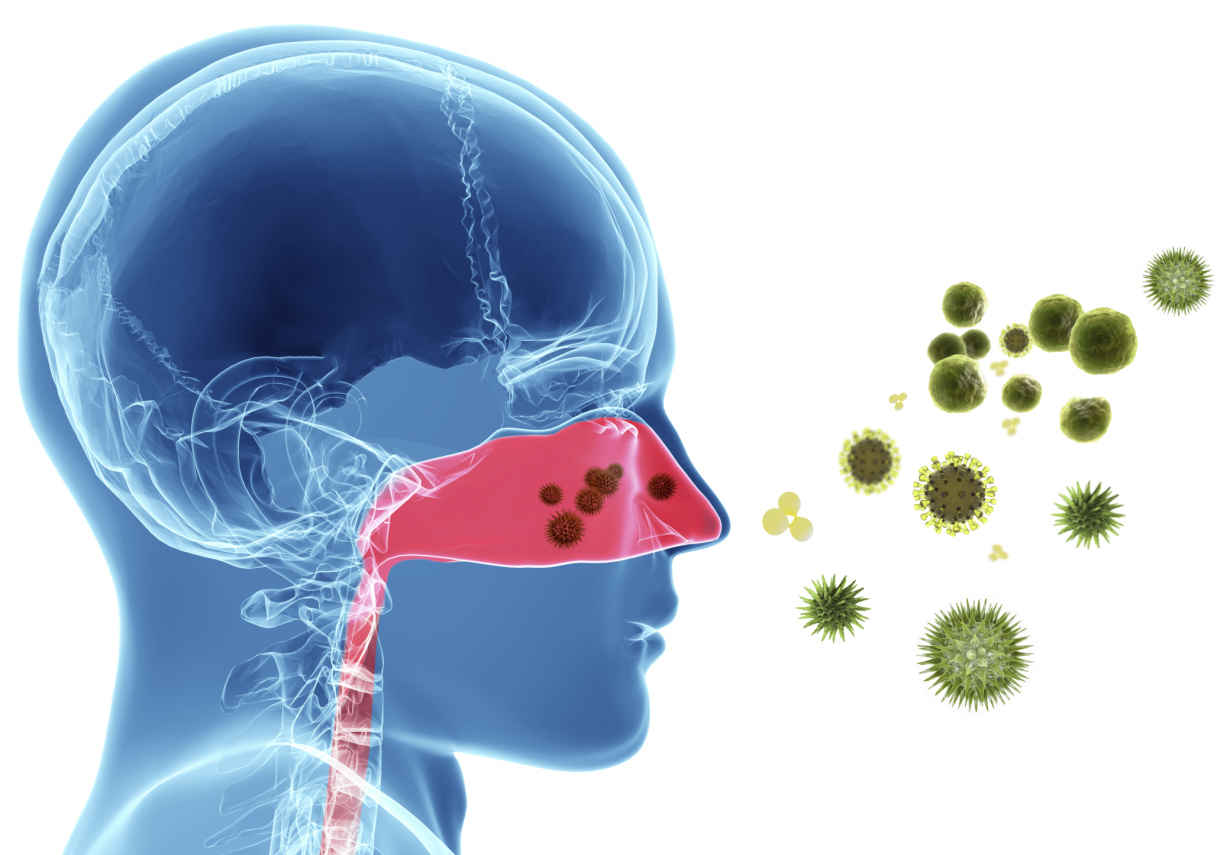
Causes of Allergic Rhinitis
Allergic rhinitis is one of the respiratory diseases caused by many causes, mainly those in the living environment, the air, the allergic factors, the weather, some internal factors in the body. each person. Specifically like
Weather
Weather is considered the most common cause of rhinitis as well as many other respiratory diseases. In particular, during the changing seasons, we are more susceptible to respiratory diseases than other times of the year. Changes in temperature and humidity are considered to be the cause of inflammation and swelling of the mucous membranes, sinus cells and nasal cavity, leading to respiratory diseases such as sinusitis, allergic rhinitis.
At the same time, the influence of temperature, heat and cold, erratic rain and sun are also factors that weaken the natural immune system, making many diseases easier to penetrate into the body. The proliferation of bacteria and molds during the changing seasons is also a favorable condition for respiratory diseases to increase.
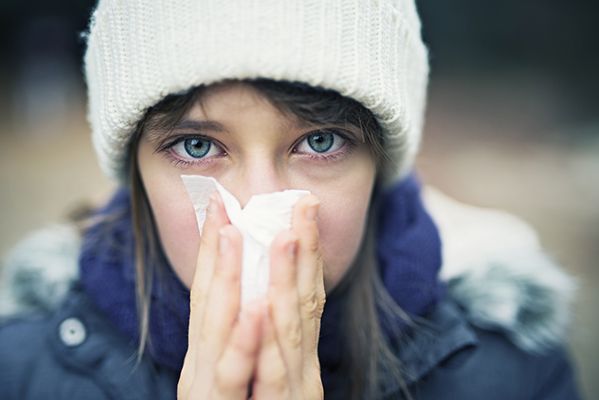
Allergic factors
Allergic elements in the air are easy to cause diseases because they are present a lot in the living environment, in constant contact with us. Allergic factors around us are very diverse such as dust, industrial waste, cigarette smoke, ticks, pollen, spores, fungi, pet dander, some insects, etc.
These allergens can be found all over your surroundings. Especially for those who do not pay attention to the hygiene of the place and living environment, they will be affected by many different allergic factors, very susceptible to allergic rhinitis and other respiratory diseases.
In addition, some allergic factors do not exist in the surrounding environment but are accidentally introduced into the body by us through foods, some oral drugs, therapeutic drugs, antibiotics, etc. Although there is a relatively low rate of allergic reactions, in some cases it can still promote rhinitis.
Some elements inside
In addition to weather factors, external allergens, internal factors such as each person’s location, genetic allergy factors, diseases affecting immunity, malformations, etc. Congenital, especially in the nose area, … can also increase the risk of disease.
Statistics show that about 60% of patients with a family history of allergy problems are more prone to respiratory diseases, diseases related to the immune system compared to other subjects. People with a history of diseases that weaken the immune system also make the respiratory system vulnerable to external factors, bacteria.
Cases of nasal anomalies such as narrowing of the septum, polyps, some structural deformities, etc. can also lead to rhinitis due to poor drainage of secretions, nasal secretions, and stagnation. , accumulation of bacteria. From there, it is easy to cause allergic rhinitis, ear, nose and throat diseases.
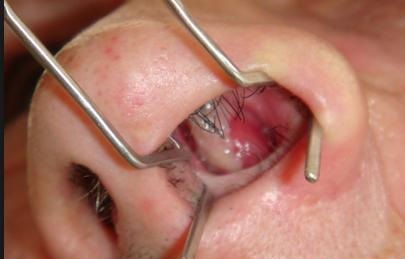
Manifestations of allergic rhinitis
Allergic rhinitis has many symptoms that are easily confused with the flu and some other respiratory diseases. Usually, people with the disease often develop symptoms after exposure to allergens in the air, after a cold infection (exposure to cold wind, rain, …). Common symptoms of allergic rhinitis in patients include:
Itchy nose
It is one of the earliest signs of disease. Itching of the nose often occurs when there are signs of rhinitis, the nasal mucosa has the invasion of bacteria, irritating factors, allergies. At this time, the body will have an itchy nose response (which often occurs with sneezing) to warn of the invasion of bacteria in the ENT area.
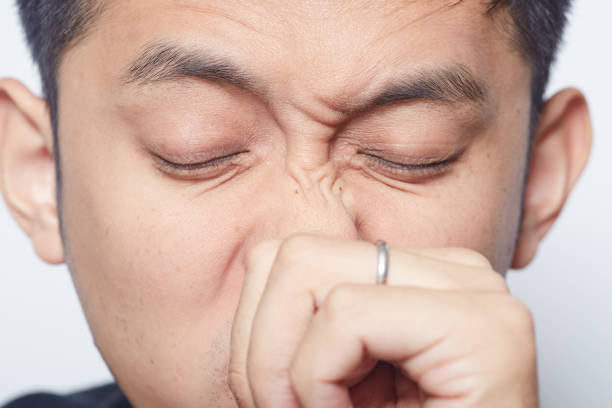
Sneeze
This is a natural reflex of the body when there are respiratory problems to push irritants in the nasopharyngeal area and bacteria out of the nasal cavity. Sneezing is usually a continuous stream, lasting many minutes and repeated several times a day. During an episode of rhinitis, sneezing may occur repeatedly. Sneezing symptoms are relatively similar to those of the common cold, so many patients confuse when there are signs of sneezing.
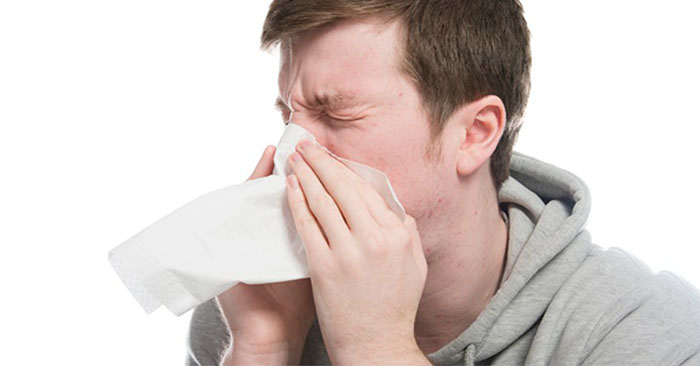
Runny nose
Runny nose due to allergic rhinitis usually occurs after or at the same time as sneezing. Symptoms of a runny nose are quite similar to many other respiratory and ENT diseases. However, patients with allergic rhinitis often have a runny nose on both sides, the nasal discharge is usually clear, without an unusual smell like some other diseases.
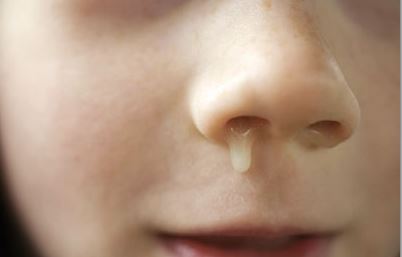
Stuffy nose
Manifestations of stuffy nose usually occur some time after the runny nose process. When the runny nose is too much, it will cause stuffy nose as well as lead to swelling of the nasal mucosa causing stuffy nose. Nasal congestion can occur on one or both sides of the nose. In some cases, it can lead to difficulty breathing, suffocation, causing the patient to breathe through the mouth.
Headache, tired
The patient may have difficulty breathing due to a stuffy nose. This makes the process of air circulation into the respiratory system and circulation to the brain more or less affected. From there, it will lead to symptoms of fatigue, lethargy, headache, affecting activities, work and life. In some cases, the pain from allergic rhinitis can also affect the facial sinuses, causing sinus pain.

Complication of the diseases
In addition to simple cases, allergic rhinitis can also be combined with many other ENT diseases, making the disease situation of each patient very different. Some patients may have the viscous substances of the rhinitis process block the spaces in the sinuses leading to allergic sinusitis (sinusitis).
If the viscous fluid clogs the spaces connecting the middle ear, tympanic membrane, and inner ear, the air circulating between these areas will be blocked, reducing air pressure, causing dizziness. flare and lead to otitis media.
In addition, rhinitis can also lead to complications such as water retention in the ears, asthma (asthma), itchy throat (itchy throat), allergic conjunctivitis (allergic conjunctivitis) if the patient is not treated. medical card.
Effective methods of diagnosis and treatment
There are many medical techniques that can help diagnose allergic rhinitis. Usually, your doctor will talk to you in advance about the signs and symptoms you are experiencing to identify some of the allergens you may be experiencing, and identify the type of allergic rhinitis of the patient. whether you are seasonal or year-round, the progress of the disease is at what level.
Skin testing can be done with certain substances applied to the skin. These substances will cause some reactions and appear small red spots on your skin. Thereby the doctor knows that you are suffering from allergic rhinitis due to which factors affect.
A blood test, also known as a radioallergosorbent test (RAST), can also be used to find out the amount of Ig E antibodies to determine the specific form of the allergy and the extent of its effects. of allergens in your body.
In some cases where the disease is caused by complications spreading to the sinuses, middle ear, eye sockets, etc., some imaging tests may be indicated to accurately diagnose the extent of the disease.
Allergic Rhinitis Medicine
While countries in Europe and America have researched treatment with biochemical preparations (often called Western drugs), many countries in Asia are inclined towards traditional treatment, folk experiences and some treatment methods with herbs, oriental medicine, each of these treatment directions has its own characteristics when it comes to implementation.
1. How to cure diseases with Western medicine
Treatment according to Western medicine methods often uses a variety of drugs with anti-inflammatory and symptom-reducing activities. Usually, the drugs to treat allergic rhinitis in Western countries include oral and nasal sprays. Some of the more commonly used medications include:
Decongestants: A group of drugs that help clear the nose, reduce pressure on the ears, nose, sinuses, etc. The drugs in this group are usually indicated for short-term use, no more than 3 days. This class of drugs is generally contraindicated for people with a history of heart disease, blood pressure, stroke, bladder or urinary problems.
Antihistamine group: This is a group of drugs that help to relieve allergic reactions in allergic patients in general and allergic rhinitis in particular. When using this group of drugs, patients should pay attention to comply with the instructions of the treating doctor, do not arbitrarily use and abuse drugs.

Group of sprays, nasal drops: These drugs usually have the main ingredient of corticosteroids with anti-inflammatory and immune-responsive effects. The main effect of the sprays is to reduce the symptoms of itching, runny nose, nasal congestion, etc. Some drugs in this group are not prescribed, however, you should not arbitrarily use sprays and drops indiscriminately because they can cause irritation of the nasal mucosa and drug resistance. These groups of drugs are often prescribed by doctors for short-term use to relieve symptoms, combined with monitoring the progress of the disease, from which to adjust accordingly.
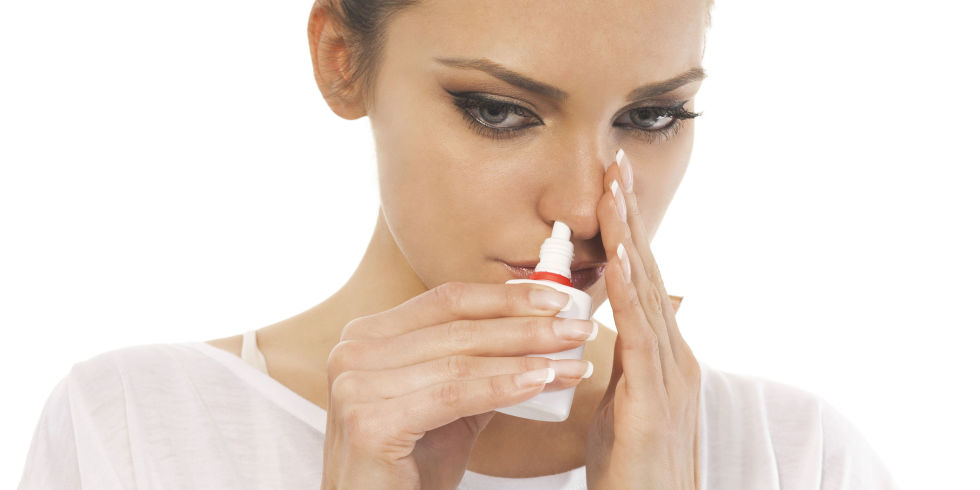
Anti-allergy injections: Injected anti-allergic drugs are rarely indicated for use. Usually, the use of anti-allergy injections is only applied to severe cases, requiring symptomatic control measures before using injectable drugs. This method is also known as immunotherapy and is usually very careful when applied.
Application of sublingual immunotherapy (SLIT): Similar to anti-allergy injections, this method is also rarely applied. Sublingual immunotherapy is indicated in cases where the symptoms of allergic irritation need to be controlled. The medication is placed under the tongue in the right amount and for a period of time to improve symptoms. Some patients may experience side effects such as sore throat, itchy mouth or ears when taking these suppositories. However, the rate of side effects is also quite low.
- Note: When using western medicine, patients need to absolutely follow the instructions of the doctor, do not use it on their own because this can cause some side effects such as drug resistance, drug resistance. In addition, the abuse of Western medicine drugs for a long time can harm the liver, kidneys, and stomach.
2. Treatment of diseases at home with folklore
Folk healing is common in some Asian countries. These methods often apply familiar herbs, common in life, have certain medicinal properties to help reduce pathogenesis symptoms. The effectiveness of these methods is often relative, often due to long-term experience in folk passing down to later generations.
Treatment with garlic: According to folklore, garlic has the effect of improving inflammation, helping to disinfect. Patients can use crushed garlic soaked with honey. After that, use a cotton ball to absorb a thick solution into the nose, do it 3 times a day to improve allergic rhinitis, relieve runny nose, and stuffy nose.

Cure allergic rhinitis with garlic Treatment with iridescent plants: Five-color plants are a familiar plant that has been used by many people for a long time to improve some inflammatory problems, clean dandruff. Patients use iridescent flowers combined with star fruit leaves, crushed mint leaves and then pack the crushed ingredients into gauze and plug into the nostrils on each side. Each side does about 15 minutes to improve the condition

Healing with five-color flowers Using horse’s head for treatment: Horsehead cone has long been used for anti-inflammatory, antibacterial, pain relief, cough relief, respiratory excitement and anti-allergy, immunosuppressive, etc. Dry and grind it into a fine powder, then mix this powder with water and drink 3 times a day. About 3g each time. Use for 2 weeks, then take a few days off, if not cured, continue.

Using horse’s head to treat allergic rhinitis according to folklore Use duckweed: The female duckweed helps to relieve colds, relieve itching, reduce allergies. The patient washes the duckweed, crushes it, and filters out the residue. The water after pounding and filtering is diluted with drinking water to dilute nasal secretions, clear the nose and reduce nasal congestion.

Cure allergic rhinitis according to folk with fresh duckweed In general, folk healing methods have certain advantages and disadvantages. The outstanding advantage of folk methods is that they are simple and easy to implement with easy-to-find and familiar ingredients in daily life. Applying these methods is also quite safe because they are natural plants, with almost no side effects.
However, most folk methods are only effective for mild cases. For patients with long-term disease, chronic disease, or recurrent disease, there is almost no effect or very low effectiveness. In these cases, more specific measures should be applied. Another disadvantage is that the duration of effects of folk methods is relatively long, about 10 to 20 days.
3. Treatment of Allergic Rhinitis with Oriental Medicine
Treating allergic rhinitis with Oriental medicine is one of the solutions trusted by many patients. Because the drug is made from natural herbs that are benign, safe for health and especially help to dig into the root cause, nourish the body, thereby eliminating symptoms and effectively preventing the disease from recurring.
Typical types of traditional medicine such as: royal flag, Te Tan, Tang parasites, Dang Gui, Ngu Vi Tu, Thuc Dia, … have the ability to enhance the function of detoxification of the liver and kidneys; Tonify blood and improve the activity of the immune system, limiting the formation of hypersensitivity reactions leading to allergic rhinitis.
They possess many impressive chemical components: saponins, flanovoids, acaloids, tannins, curamines, etc. These active ingredients have anti-allergic, natural anti-inflammatory effects, and enhance the activity of the immune system. Thanks to that, the symptoms of sneezing, runny nose, and runny nose due to nasal allergies are eliminated naturally. Meanwhile, the root of the disease is a weak immune system, and allergies are still effectively solved.
Usually, it only takes about 2-5 weeks for the patient to completely resolve the unpleasant symptoms, including stuffy nose, allergies, itchy nose, sneezing, headache, swollen eyes… To get rid of the disease stable, without recurrence, patients need to be treated according to the right regimen lasting from 2 to 4 months, depending on the severity of the disease / mildness of each person.



